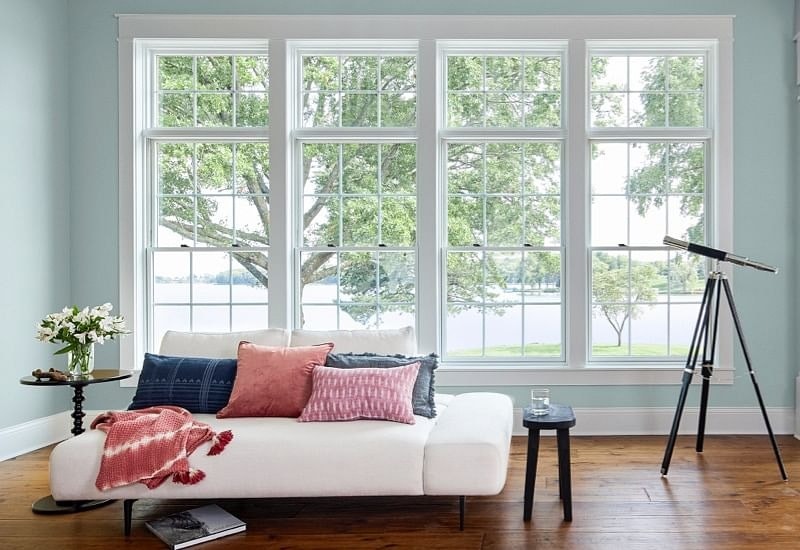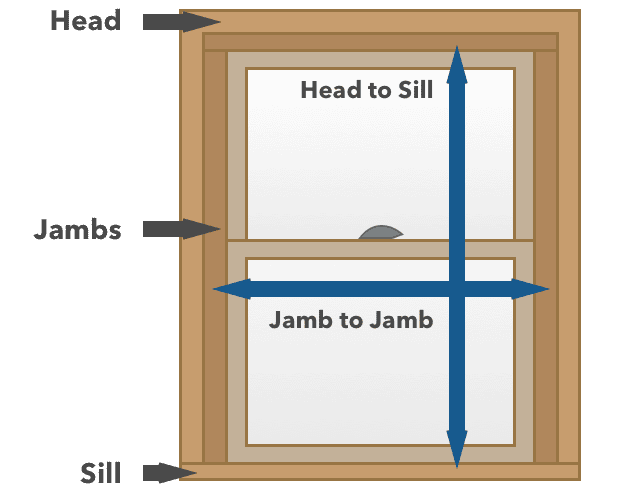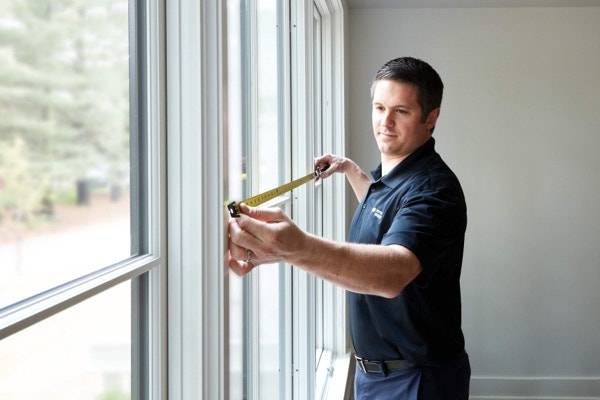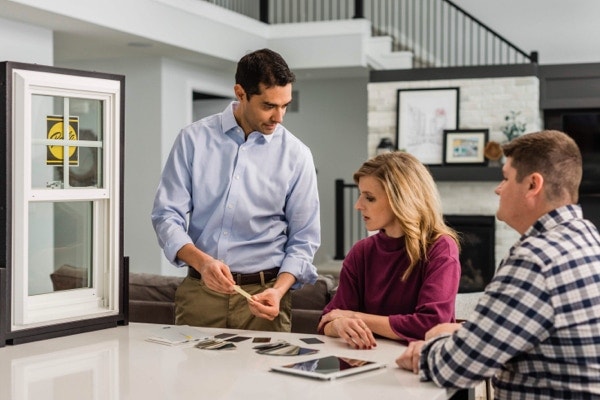How to Measure a Window
Posted
on July 1, 2021

Measuring a window seems like a straightforward task. Height and width and you’re on your way!
The problem is, there’s a myriad of window sizes. And every window is custom-made for a custom fit for each individual opening.
So accuracy is everything. Even a minor mismeasurement can throw a wrench in the installation process and impact performance. You can avoid all that with these tips for getting your window measurements right.
How to Measure a Window
It’s true that you only need to measure height and width. But to ensure accuracy, you can’t take just two measurements — you need to make six.
To get the width, measure from left to right, jamb to jamb. Do it at the top, middle and bottom of the jambs to get three width measurements. For height, measure from the head down to the window sill on both sides and in the middle.

Brush up on your window anatomy to be sure you’re measuring from the right spots. If you unintentionally measure only to the sash stops instead of the jambs, or stop at the interior trim of the sill when checking the height, your new window will be too small. Go too far past the jambs, head or sill and your next window will be too big for the existing opening.
Most homes have a mix of window styles. And you may need to measure a little differently depending on the type of window or the presence of trim:
- For windows without headers, measure the height from the drywall at the top to the sill at the bottom. Or measure drywall to drywall if there’s no trim on the window sill.
- For windows with sliding sashes, be sure to take your middle measurements where the two sashes meet at the center of the window.
Once you’ve taken six window measurements, jot down the shortest height and width — not the middle measurement or an average of the three. There’s a bit more to the window frame than you can see or measure, so you want to err on the short side when you order replacement windows.

What to Do with Your Replacement Window Measurement
Getting a rough estimate of the size of one or all your windows is the first step in the replacement process. In addition to the height and width of each window, make note of a few other things to help in getting an estimate:
- Style of the window
- Placement and direction of the window
- Room the window is in
- Problems or challenges experienced with the window
With this information, a window expert can give you much more than a quote for your replacement project. They can make informed recommendations on which windows will be the best fit for your style and performance needs.
Of course, an in-home consultation would be even more helpful. It’s one thing to talk to a professional in a showroom. It’s another to walk them through your home and discuss your options room by room and window by window.
During a consultation, a window expert can inspect and assess any window performance problems you’re concerned about so you can address them with your replacements. They’ll also bring plenty of samples so you can actually see how things look in your home and interact with other elements of your interior design. And lastly, they’ll measure your windows (again).

The Importance of Professional Window Measurement
Countertops, cabinets, decks, flooring — most major home improvement projects require an accurate measurement by a professional before the work begins. It’s like the old saying, “Measure twice. Cut once.” Professionals and contractors want to ensure an exact fit so that you’re happy with the result and the products they install perform as intended.
A measurement that’s off by even a fraction of an inch could lead to major problems and major costs:
- Windows that don’t open, close or lock properly
- Drafty windows
- Poor energy efficiency
- Water damage, mold or rot from leaks and cracks
- Window condensation
- Safety issues
A professional window measurement, on the other hand, costs you nothing. It’s a standard part of a free consultation. So while you can always measure windows yourself to get a good idea of your needs and project costs, a no-cost professional measurement ensures a perfect fit.
Schedule a free consultation to find windows and doors for your home.
